29 Small Room Designs for Boys That Are Smart, Stylish, and Space-Savvy
Designing a small room for a boy isn’t just about fitting furniture—it’s about creating a space that reflects personality, sparks imagination, and works well for sleep, study, and play. Whether you’re working with a shared room, a tiny bedroom, or a creative corner, these small room designs for boys offer practical and stylish ideas to make the most of every inch.
1. Choose Multi-Functional Furniture
When space is limited, furniture that does double (or triple) duty is your best friend. Think beds with storage drawers, fold-out desks, or ottomans that open up for toy storage. These pieces save floor space and help keep things organized.
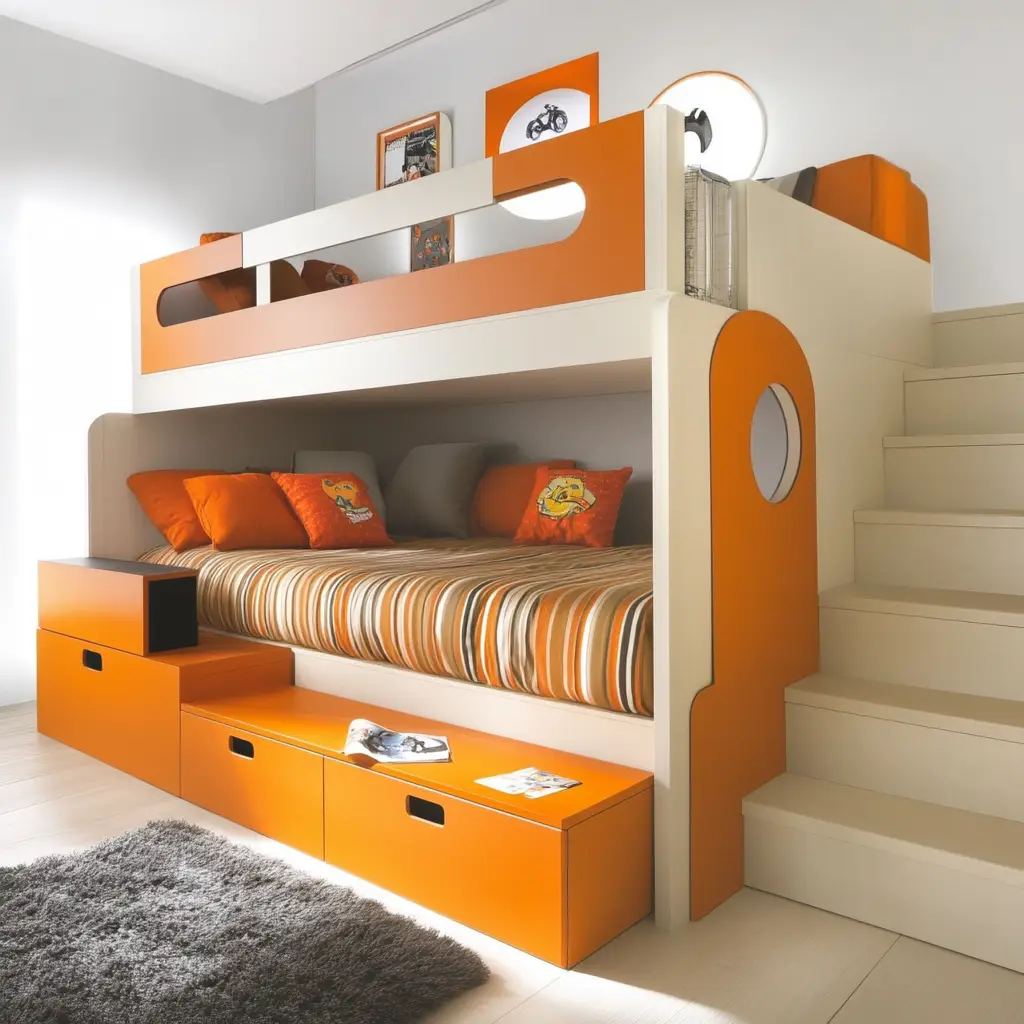
2. Use Vertical Space
Small rooms benefit a lot from vertical design. Add floating shelves, wall hooks, or tall bookcases to get items off the floor and free up room to move. You can even try wall-mounted desks or lights to keep the floor area as open as possible.
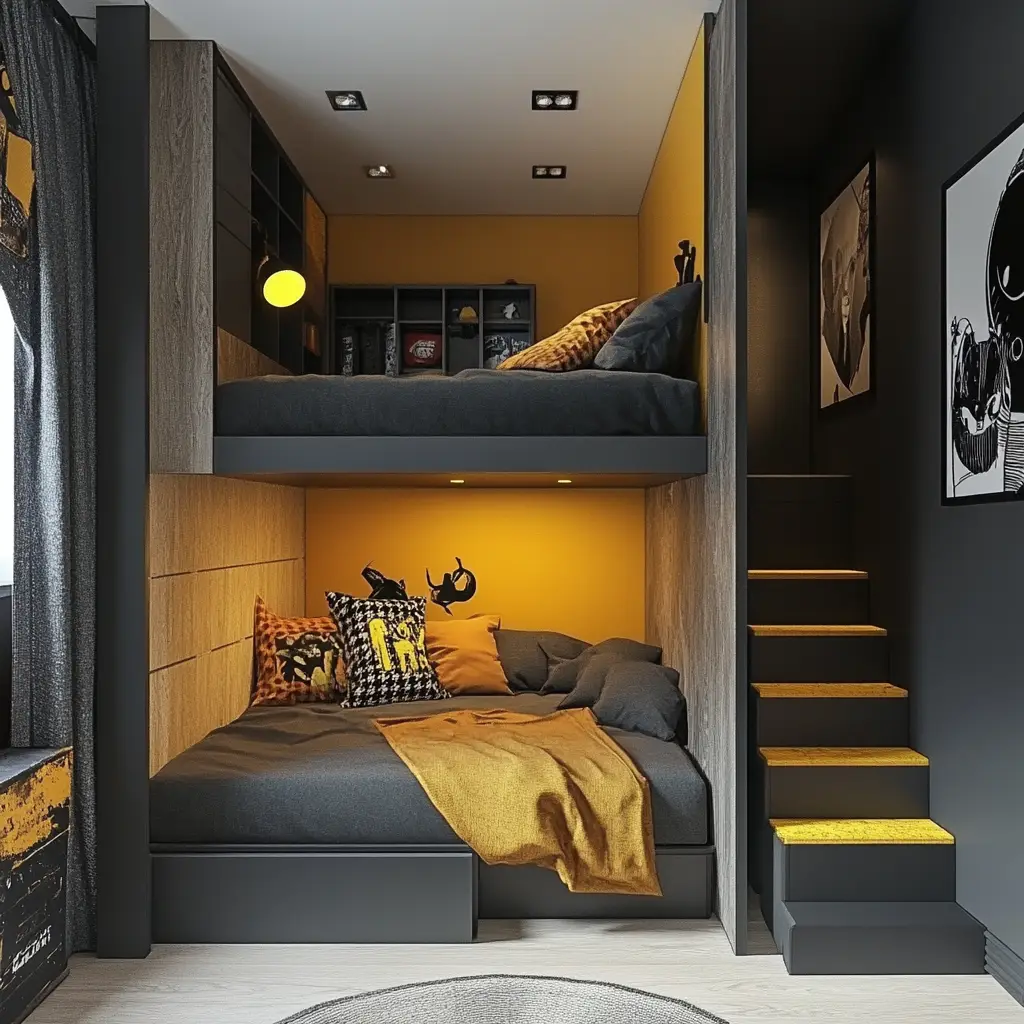
3. Pick a Simple, Smart Color Scheme
Stick with a clean and cohesive color palette—blues, grays, greens, or earth tones often work well. A lighter wall color with darker accents can make the room feel bigger while still giving it personality. Keep things grounded but playful.

4. Add Personality With Wall Art or Decals
Just because it’s a small room doesn’t mean it has to be plain. Use wall decals, posters, or artwork that reflects their interests—sports, space, animals, or favorite characters. It’s a simple way to make the room feel more personal and fun.
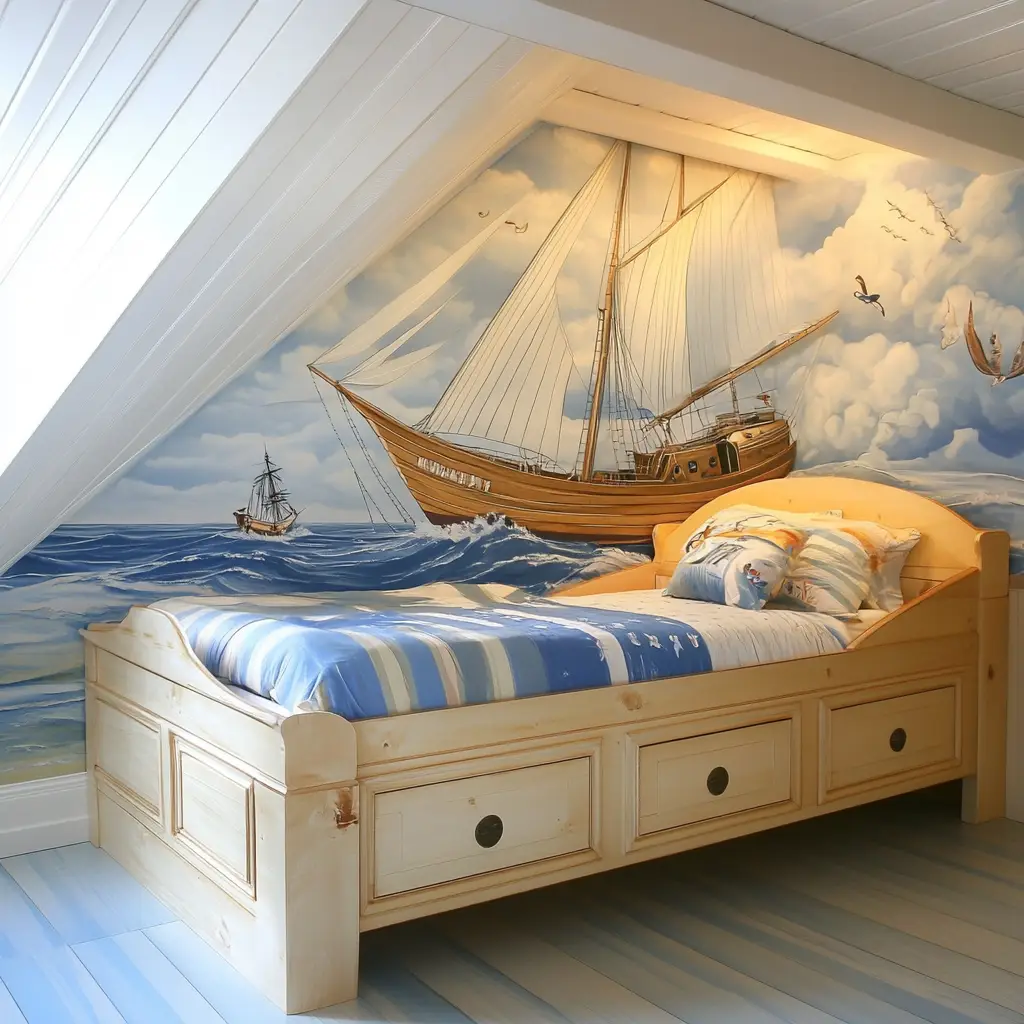
5. Incorporate a Loft or Bunk Bed
If the ceiling height allows, a loft bed or bunk bed can totally transform a small space. The area below can be used for a desk, reading nook, or play zone. It opens up more room and gives the space a cool, adventurous feel.
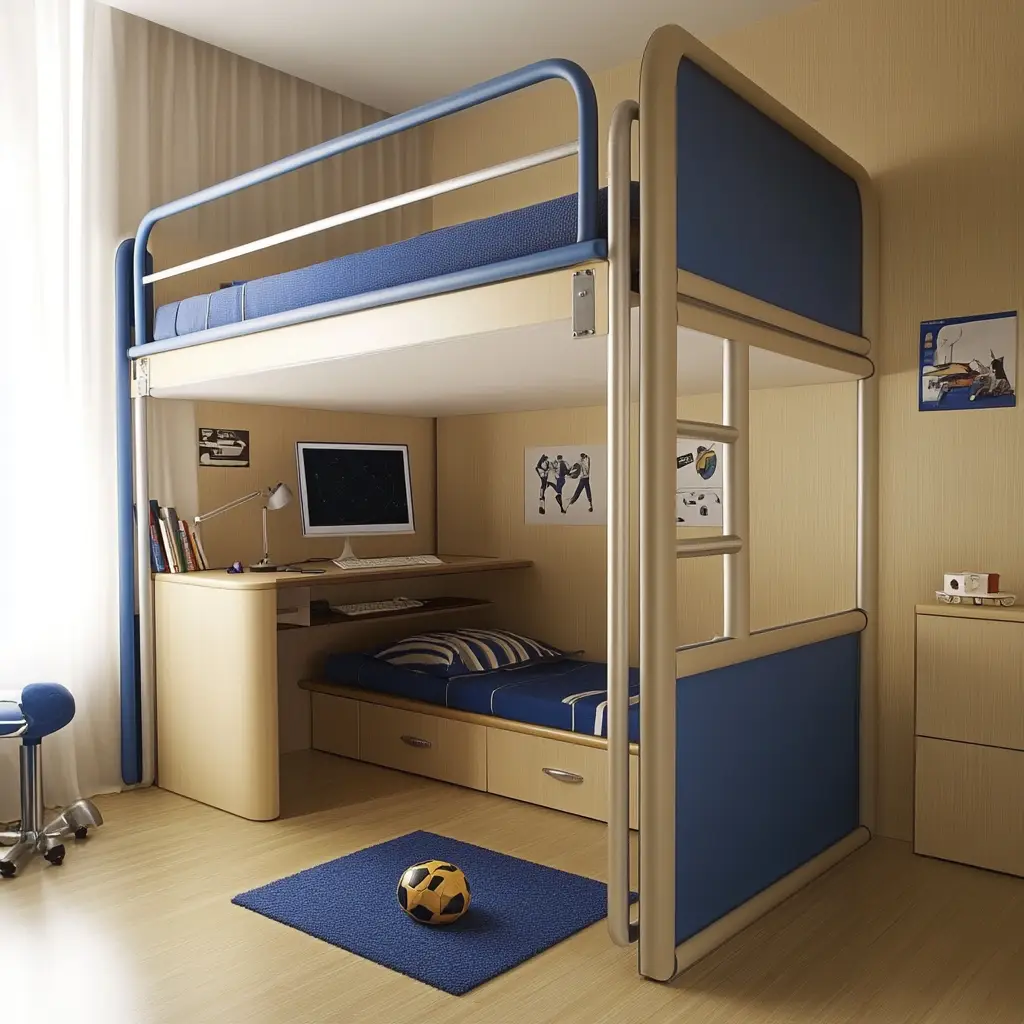
6. Keep Storage Accessible and Kid-Friendly
Use low bins, labeled baskets, or cubbies to make it easy for your child to clean up after themselves. Built-in drawers or under-bed containers are also great options that won’t take up extra room. Bonus: it helps teach independence, too.
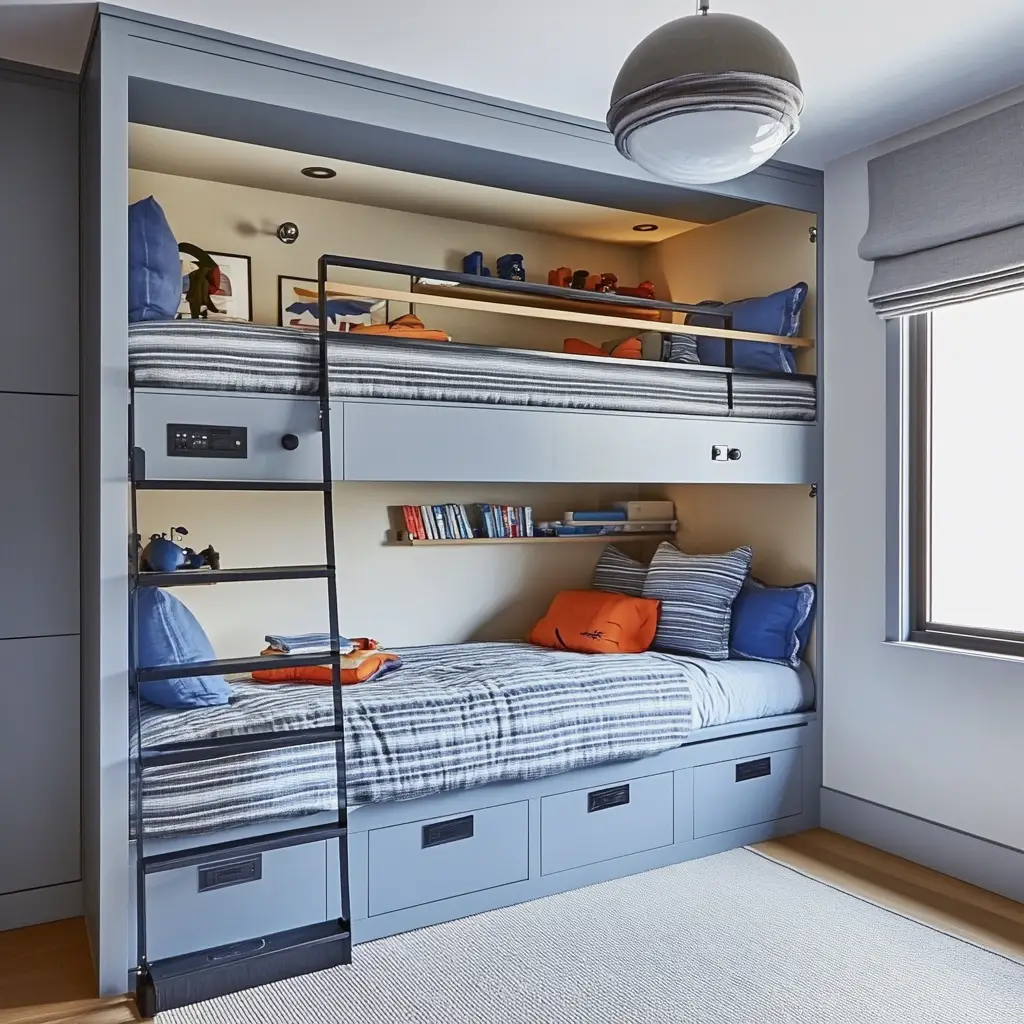
7. Create a Dedicated Homework or Creative Corner
Even a small surface and a chair in a quiet spot can be the perfect space for drawing, reading, or homework. Add a small desk with shelves above it, or create a cozy study nook under a loft bed. This gives the room purpose beyond just sleep.

8. Let Lighting Do the Work
Good lighting can make a small room feel larger and more inviting. Try layered lighting—overhead, task lighting, and a soft bedside lamp or string lights. A fun nightlight or LED strip can also add personality and comfort at bedtime.
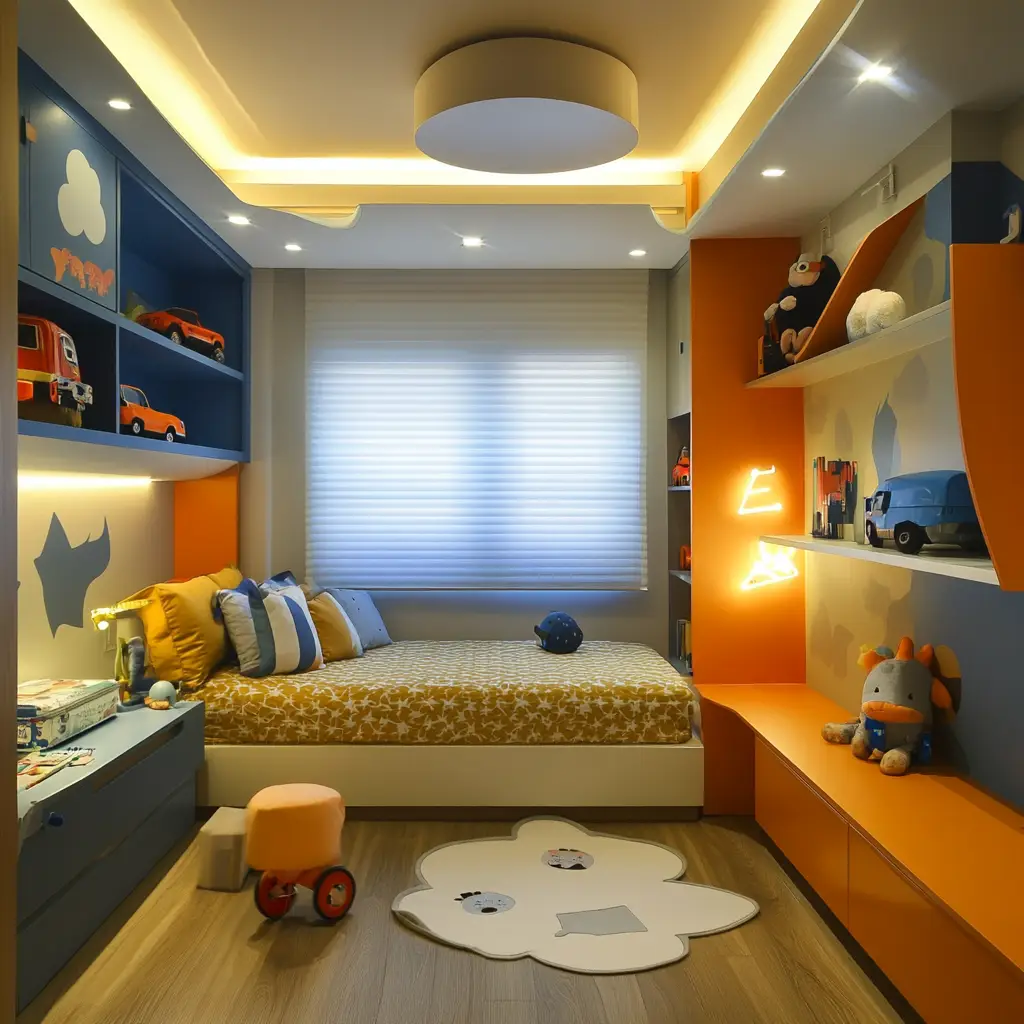
9. Keep Décor Minimal but Meaningful
Instead of overloading the space with decorations, choose a few key items that reflect your child’s style. A cool rug, a favorite toy on display, or a personalized name sign can go a long way in making the room feel special without crowding it.
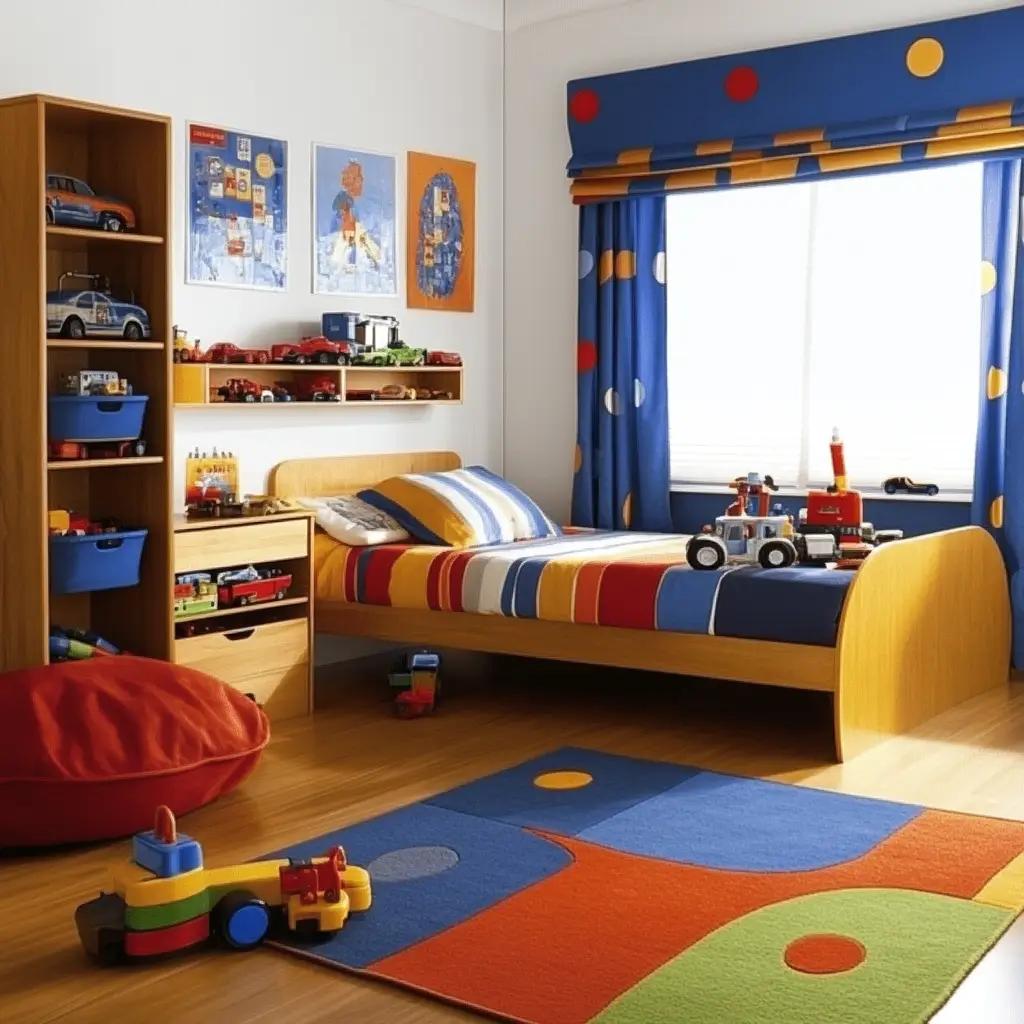
10. Use Mirrors or Reflective Surfaces
Mirrors can make a small room feel bigger and brighter. Hang one across from a window or near a light source to bounce light around. Even small mirrored accents can help open up the space visually.
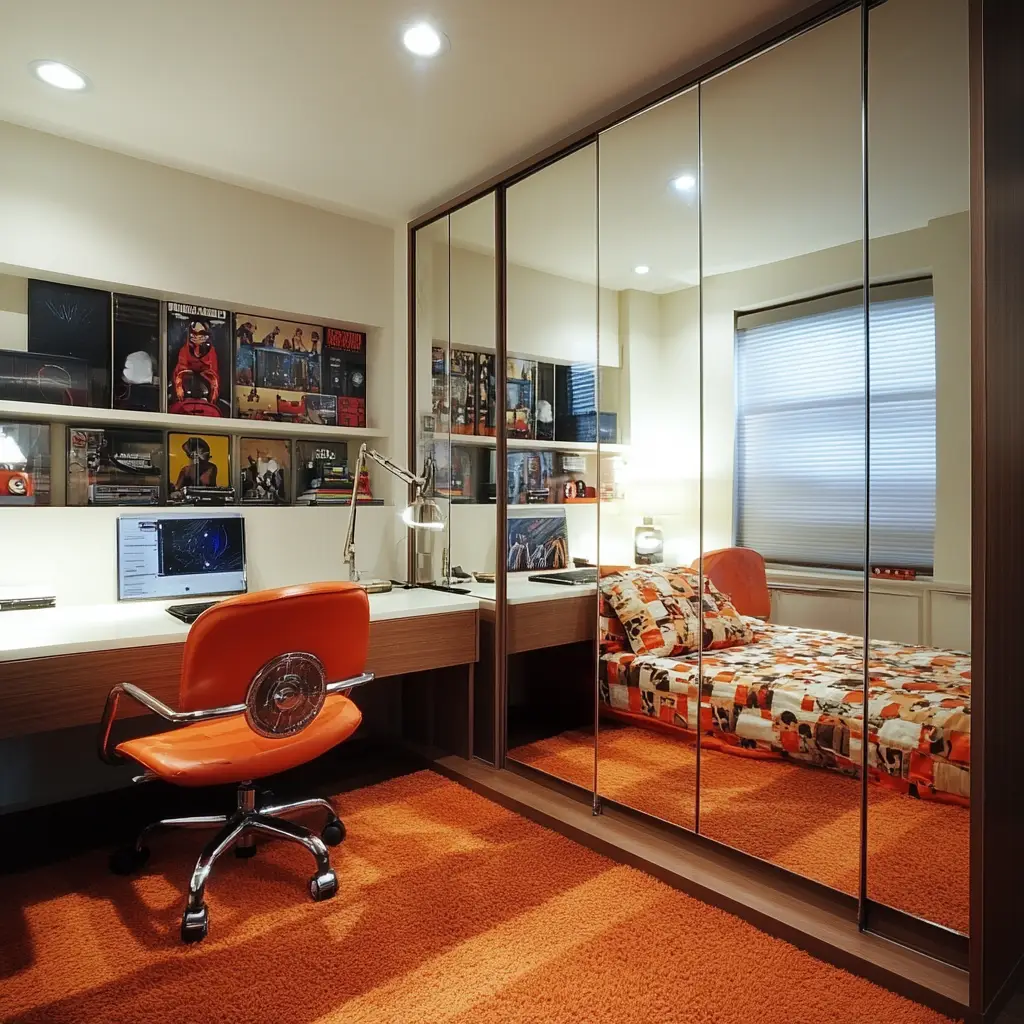
FAQs
How can I make a small room feel bigger for a boy?
Stick with lighter wall colors, use furniture with clean lines, and take advantage of vertical storage. Mirrors and good lighting can also help the room feel more open.
What colors work best for boys’ small room designs?
Blues, grays, greens, and warm neutrals all work well. Try to avoid very dark walls in small rooms unless you balance them with lots of natural light and lighter furniture.
Is a bunk bed a good idea for a small room?
Yes, especially if it’s a shared room or you want to free up space underneath for a desk or play area. Just make sure there’s enough ceiling clearance for safety and comfort.
How do I add personality without cluttering the room?
Choose a few bold elements—like themed bedding, a fun lamp, or a statement wall decal—and keep the rest simple. This keeps the room visually calm but still fun and personal.
What’s the best layout for a small bedroom?
Start by placing the bed in a corner to free up central space. Use walls for storage and keep walkways open. If possible, choose furniture that fits the scale of the room to avoid making it feel crowded.
Conclusion
Small rooms can still have big style. With a little creativity and some smart choices, you can design a room that’s practical, cozy, and totally in tune with your child’s personality. These small room designs for boys are all about using what you have and making it work in a way that feels good—for both you and them.
Whether it’s a quiet place to sleep or an adventurous spot to play, the best spaces are the ones that grow with them over time. And in the end, it’s not about how big the room is—it’s about how it makes them feel.